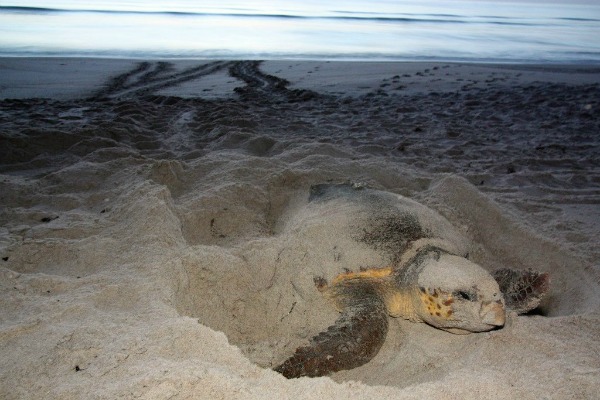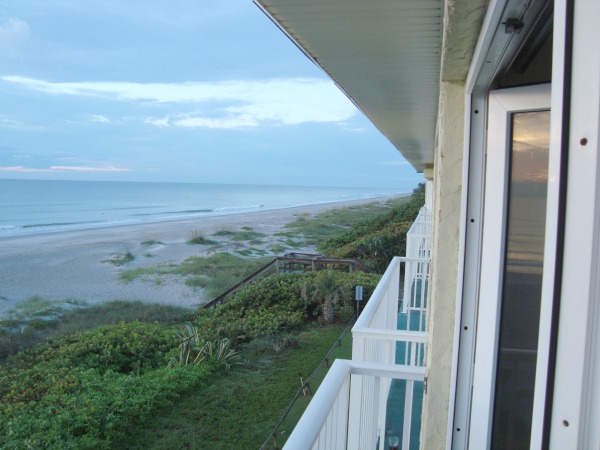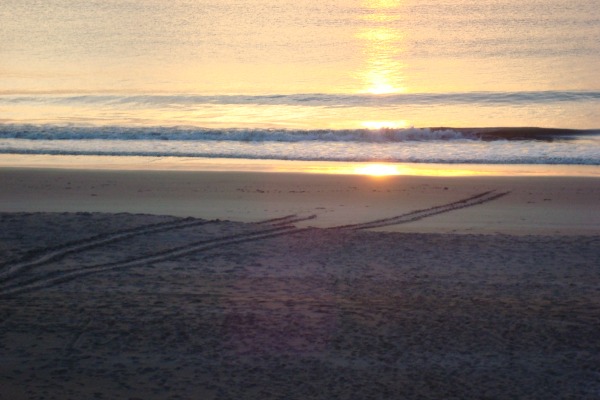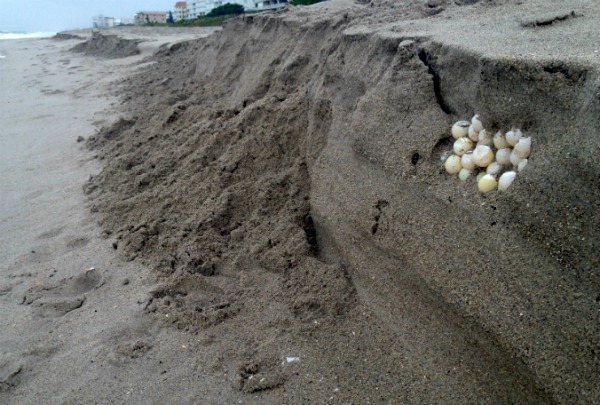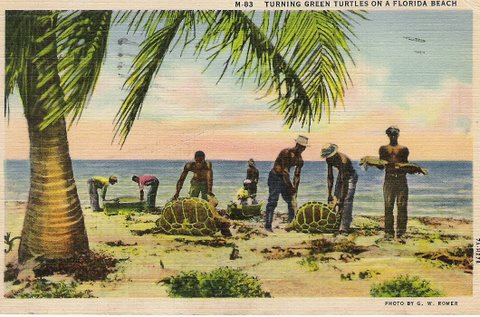- Home
- Tourist Attractions
- Sea Turtles Nesting on Florida Beaches
SEA TURTLES ON FLORIDA BEACHES
By Mike Miller June 1, 2023
Sea turtles on Florida beaches are a common sight during the nesting season that typically runs from May to October.
Florida's beaches are famous around the world for their beautiful white sands and year round fun in the sun.
To the sea turtle these beaches are much more than a playground.
It's where they begin their lives as eggs and hatch into little sea turtles. It's estimated that each year sea turtles make from 40,000 to 84,000 nests on Florida beaches.
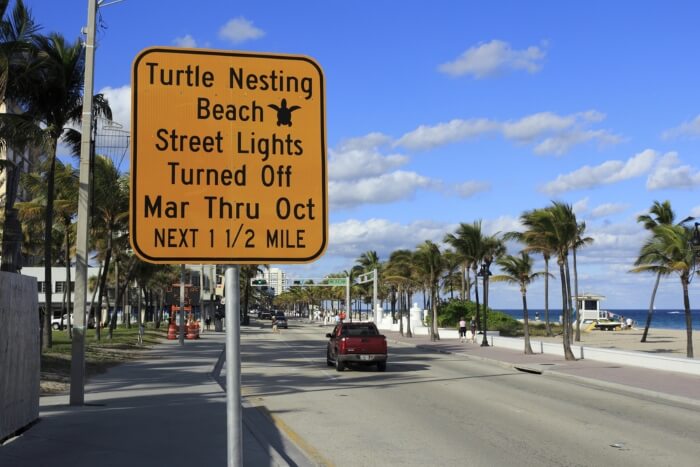 Sea Turtle Caution Sign
Sea Turtle Caution SignShutterstock
Sea turtles in Florida are considered a protected species, and there are several agencies and laws in place to ensure their conservation and well-being.
The primary agency responsible for the protection of sea turtles in Florida is the Florida Fish and Wildlife Conservation Commission (FWC).
The FWC works closely with other organizations, such as the U.S. Fish and Wildlife Service and the National Marine Fisheries Service, to monitor and manage sea turtle populations.
They enforce laws and regulations to safeguard sea turtles, including their nesting sites, habitats, and migration routes.
One of the most significant laws that protect sea turtles in Florida is the Florida Marine Turtle Protection Act.
This legislation prohibits the intentional harming, harassment, capture, or killing of sea turtles, their eggs, or nests.
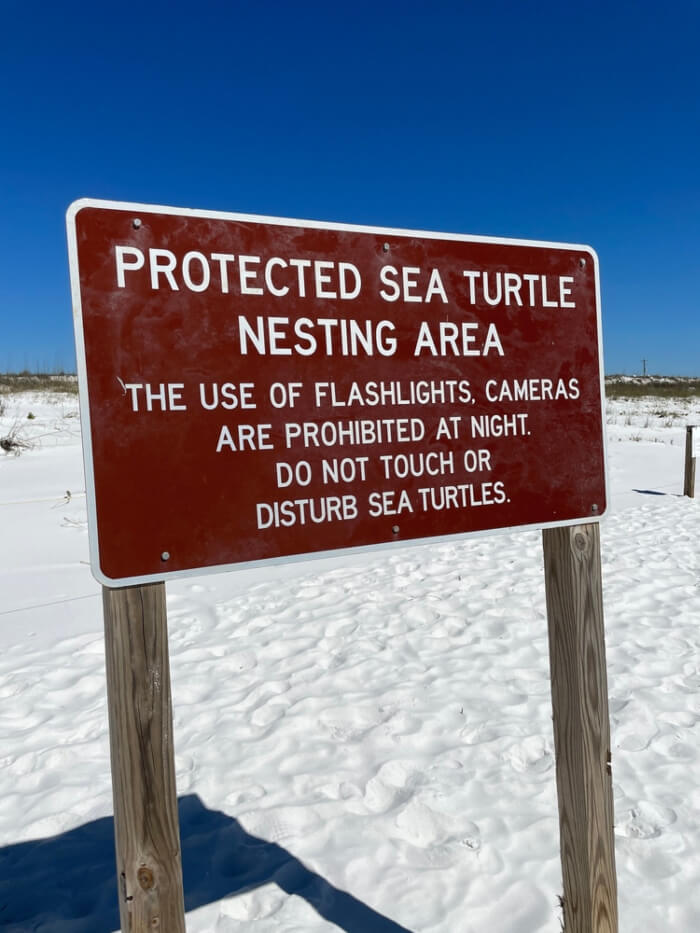 Sea Turtle Caution Sign
Sea Turtle Caution SignShutterstock
It also mandates the implementation of lighting regulations to minimize disorientation of hatchlings, as well as restrictions on driving vehicles on beaches during nesting season.
These measures are crucial to preserving the natural nesting behaviors and reproductive success of sea turtles.
Visitors to Florida's beaches must be extremely cautious during sea turtle nesting season, which typically occurs from May through October.
It is essential to respect the designated nesting areas, marked with signs and tape, and to avoid disturbing the turtles or their nests.
Avoid using flashlights, flash photography, or other bright lights at night, as they can disorient nesting turtles or confuse hatchlings.
It is advisable to refrain from touching or approaching nesting turtles and their eggs, as it can cause unnecessary stress and disrupt their natural behavior.
By following these guidelines and being mindful of the presence of sea turtles, visitors can contribute to the conservation efforts and help ensure the survival of these magnificent creatures in Florida's coastal ecosystems.
MY SEA TURTLE SIGHTING
I recently spent a night at a small oceanfront resort in Indialantic, Florida. My room was on the third and top floor of the inn.
The glass doors looked out directly to the beach and the Atlantic Ocean.
It was turtle nesting season and all hotel guests were required to draw the drapes or turn off the lights after dark. Mother sea turtles get confused by artificial lights as they head for their nesting territory in the dunes.
It was a beautiful slightly cloudy night and a bit breezy after the recent passage of Tropical Storm Colin.
The sea was just rough enough to produce the rolling waves that make such a beautiful surf sound that is like a lullaby to a tired traveler or beach goer.
Just before midnight I turned off the room lights, drew back the vertical blinds, and opened the glass doors to enjoy the sounds of the nearby surf.
I sat by the open door working on my laptop with the screen facing inside the room like a good turtle protection advocate should do.
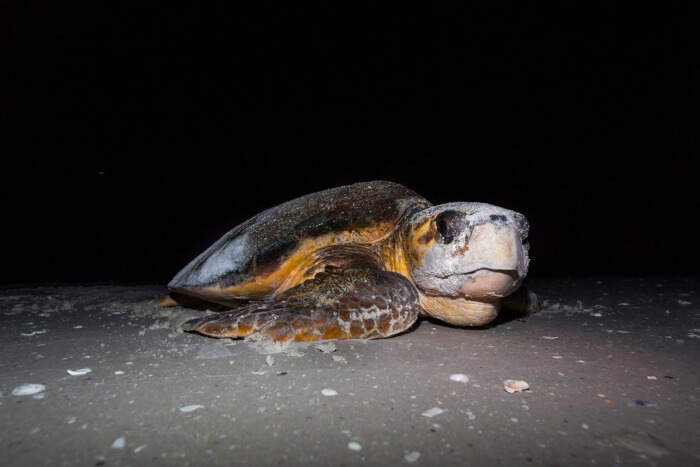 Loggerhead Sea Turtle
Loggerhead Sea TurtleShutterstock
After some time, I glanced out to the beach and saw a dark shape slowly crawling up the beach from the ocean.
It was dark enough it could have been a Navy seal or an amphibious terrorist, but it definitely caught my attention.
My eyes had adjusted to the darkness and I soon determined I was watching a sea turtle on her way to lay eggs.
The mama turtles are in a hypnotic trance as they march up the beach on their reproductive mission. I sat still until she nested and I watched her lay several eggs.
From my room I could see her finish the task and use her flippers to cover the nest with sand. She trudged wearily back to the ocean. I believe she was a Loggerhead turtle.
In the morning I could see three other turtle tracks coming up to the dune line and leading back to the ocean. It had been a busy night for the turtle mothers.
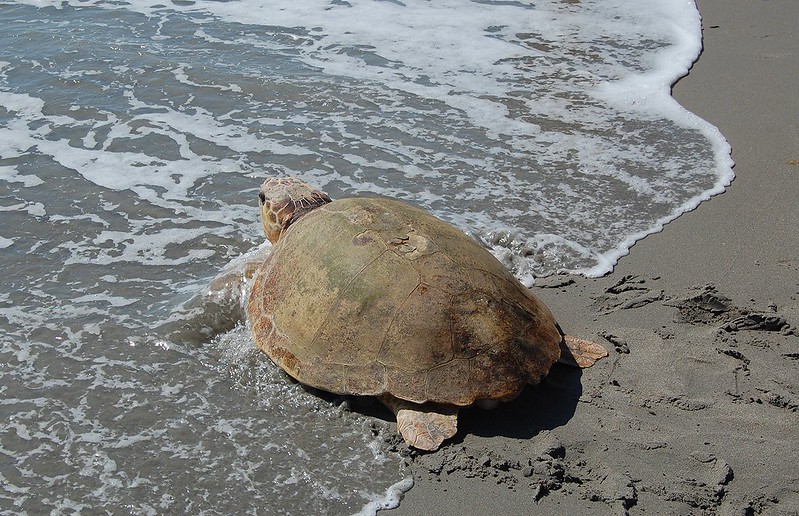 Loggerhead Turtle Heading Home
Loggerhead Turtle Heading HomeFlickr/Florida Fish and Wildlife
I knew that when the eggs hatched in a couple of months those little turtles that survive their crawl back to the sea will instinctively know to come to this same beach location when they are adults and ready to lay their own eggs.
It's as if they have their own built in GPS systems.
Among the hazards the eggs must survive are tropical storms and hurricanes.
The photo below shows turtle eggs in Melbourne Beach, Florida that were exposed after severe erosion caused by Tropical Storm Colin on June 8, 2016.
The photo was in Florida Today and the photo was taken by Jon Shaban of their staff.
The eggs also have to survive ants, crabs, raccoons, dogs, cats, birds, and any other creature that craves protein.
Early Native Americans and Florida pioneers considered turtle eggs and turtle meat to be a delicacy.
Restaurants offered them up as gourmet food and what wasn't consumed in Florida was shipped up north to hungry Yankees.
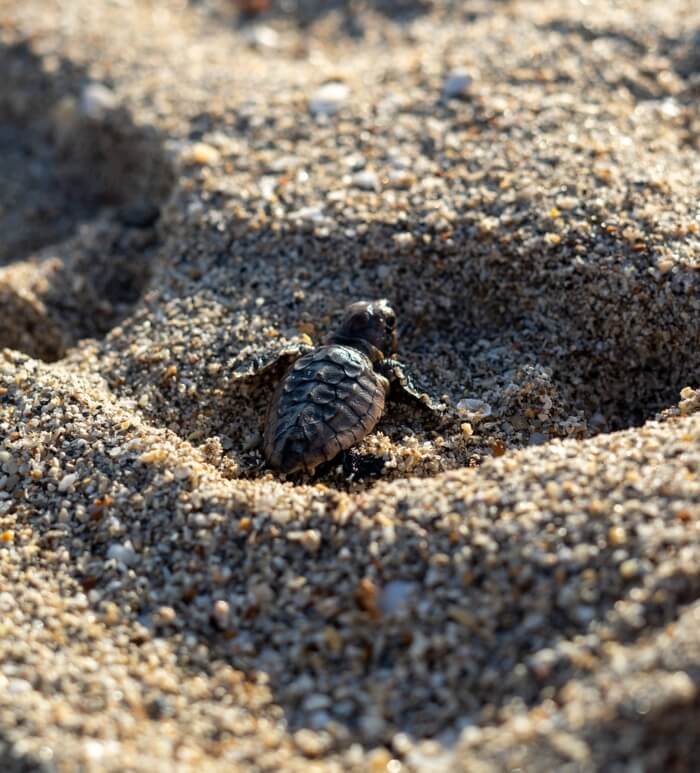 Sea Turtle Hatchling
Sea Turtle HatchlingShutterstock
After the eggs hatch the little hatchlings stay in the nest until they have all broken out of their eggs.
Then they all leave at night at the same time and instinctively head for the ocean. Only about 1 in 1,000 baby turtles survive into adulthood.
They look for the brightest light and in a natural environment that is the horizon of the sea.
This is why lights on shore can distract them and make them head in the wrong direction.
The little critters have to survive dehydration and the hordes of birds, crabs and other animals that want to eat them. Only the strongest - or luckiest - make it.
There are five species of sea turtles that you might see on Florida's beaches: Hawksbill Turtle, Kemp's Ridley, Loggerhead Turtle, Leatherback Turtle, and Green Turtle.
More information about sea turtles can be found at Florida Fish and Wildlife Conservation Commission and at the Sea Turtle Preservation Society in Indialantic.

Florida is the fastest-growing state in the United States and also the fastest-changing. If you see anything in this article that has changed or is in error, please let me know.
Thousands of Florida fans subscribe to our free daily Ezine, Florida Heritage Travel and we have 130,000 followers on Facebook.
By Mike Miller, Copyright 2009-2025
Florida-Back-Roads-Travel.com
Florida Back Roads Travel is not affiliated with or endorsed by Backroads, a California-based tour operator which arranges and conducts travel programs throughout the world.
